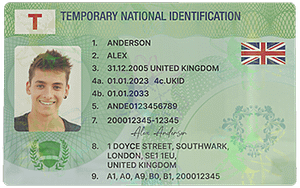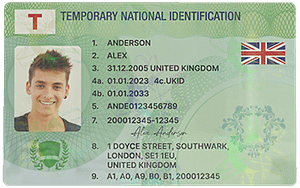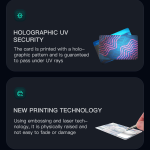Understanding Real ID: A Foundation for Modern Identity Checks
The term “Real ID” refers to a set of security standards established by the U.S. federal government in 2005 through the Real ID Act. These standards outline specific requirements for state-issued driver’s licenses and identification cards, aiming to create more reliable forms of identification for official purposes. Unlike standard state IDs, Real IDs include enhanced security features such as holographic overlays, machine-readable zones, and unique identifiers that make them harder to counterfeit. By 2025, these IDs will be mandatory for accessing federal facilities, boarding domestic flights, and, increasingly, for private sector verification processes where strict identity confirmation is necessary.
For organizations like art galleries, which often host high-value events, manage exclusive memberships, or handle transactions involving valuable artworks, reliable identity verification is critical. Real IDs offer a trusted baseline for confirming a patron’s identity, reducing risks associated with fraud, unauthorized access, or security breaches. However, they are not the only tool in a gallery’s verification toolkit—galleries often combine Real IDs with other methods to ensure accuracy and compliance with varying needs.

Why Art Galleries Need Patron Verification
Art galleries operate in a unique space where creativity intersects with commerce, community, and security. Here are key scenarios where verifying a patron’s identity becomes essential:
- Membership Access: Many galleries offer tiered memberships with benefits like exclusive previews, discounts, or curator-led tours. Verifying identity ensures only paid members access these perks, preventing freeloading or misuse of privileges.
- High-Value Transactions: Purchasing art, especially works by established artists, often involves significant sums. Verifying a buyer’s identity helps prevent fraudulent purchases, money laundering, or disputes over ownership.
- Special Events: Private viewings, charity auctions, or artist meet-and-greets may have limited capacity or require background checks. Identity verification ensures attendees match the guest list, enhancing safety and event integrity.
- Loan or Consignment Agreements: When galleries borrow art from collectors or consign works, verifying the lender’s identity protects against disputes or claims of unauthorized loaning.
- Security Protocols: In an era of increased public safety concerns, galleries may need to screen patrons for past misconduct (e.g., vandalism, theft) by cross-referencing verified identities with internal or law enforcement databases.
How Art Galleries Integrate Real ID into Verification Practices
While Real IDs are not universally required for all gallery interactions, they play a key role in scenarios demanding high confidence in a patron’s identity. Here’s how galleries apply them:
1. Membership Enrollment
When a patron signs up for a gallery membership, staff may request a Real ID (or another government-issued ID, depending on policy) to confirm their name, address, and age. This information is stored securely to link the patron to their membership benefits and communication preferences. For example, a gallery offering senior discounts would verify age using a Real ID to ensure only eligible patrons receive the benefit.
2. Ticketed Events
For sold-out exhibitions or ticketed talks, galleries often require ID matching the name on the ticket at entry. A Real ID provides a quick, reliable way to confirm that the person holding the ticket is the intended recipient, reducing scalping or resale fraud.
3. Art Purchases and Donations
When a patron buys a piece costing thousands of dollars or donates art to the gallery, verifying their identity through a Real ID (or passport, if international) helps establish a legal record of the transaction. This is especially important for provenance documentation, which tracks an artwork’s ownership history and is critical for its value and authenticity.
4. Access to Restricted Areas
Many galleries have storage rooms, conservation labs, or offices not open to the public. Staff may require Real ID verification for patrons granted special access (e.g., researchers, collectors), ensuring only authorized individuals enter sensitive spaces.
Balancing Verification with Patron Experience
While identity checks are necessary, galleries must avoid making patrons feel surveilled or inconvenienced. Here are strategies to maintain a positive experience:
- Transparency: Clearly communicate why ID is needed (e.g., “We require ID to confirm your membership for today’s exclusive tour”) to reduce confusion or resistance.
- Technology Integration: Using ID scanners that quickly verify a Real ID’s authenticity (checking for holograms, barcode data) speeds up the process, minimizing wait times.
- Alternative Options: For patrons without a Real ID, accept other valid forms (passport, military ID, permanent resident card) to avoid excluding visitors. Post a list of accepted IDs at entry points.
- Staff Training: Train front-of-house staff to handle ID checks politely. Emphasize empathy—e.g., “I understand this might feel like an extra step, but it helps us keep our events safe and exclusive for everyone.”
Privacy and Compliance: Safeguarding Patron Data
Collecting ID information raises privacy concerns. Galleries must comply with state and federal laws (e.g., the Gramm-Leach-Bliley Act for financial data, or state-specific privacy regulations) to protect patron data. Key practices include:
Limited Data Retention: Store ID details only as long as necessary. For example, ticketed event ID checks may only need data retained for the event duration, while memberships may require storage until the membership expires.
Secure Storage: Store physical ID copies in locked files and digital data in encrypted databases. Restrict access to only staff who need it (e.g., membership managers, security leads).
Patron Consent: Inform patrons how their ID data will be used (e.g., “We’ll use your ID to confirm your membership; we won’t share it with third parties”) and obtain explicit consent before collecting it.
Common Questions About Real ID and Gallery Patron Verification
1. Do art galleries legally need to check Real IDs for entry?
No, federal law does not mandate Real ID checks for private businesses like art galleries. However, galleries may set their own policies based on their needs (e.g., membership access, event security). They can choose to accept other valid IDs, such as passports or state-issued non-driver IDs, if a patron lacks a Real ID.
2. What if a patron refuses to show ID at a gallery?
Galleries have the right to deny entry or service if a patron refuses to comply with their verification policies, provided those policies are clearly communicated. For example, a gallery hosting a private auction may state in advance that ID is required for entry; a patron refusing could be turned away.
3. How do galleries protect my ID information from theft or misuse?
Reputable galleries use secure methods to store ID data. Physical copies are kept in locked cabinets, and digital records are encrypted. Many galleries also limit data retention—for instance, deleting scanned ID copies after an event concludes or a membership expires.
4. Can international visitors use their passports instead of Real IDs at galleries?
Yes. Most galleries accept valid passports, permanent resident cards, or other government-issued IDs from foreign countries as proof of identity. This is especially common in urban galleries that cater to international tourists or collectors.
5. Are there age restrictions where Real ID verification is necessary?
Yes, for events with age limits (e.g., 21+ wine tastings, or exhibitions with adult content). Galleries may check Real IDs (or other IDs) to confirm a patron’s age, ensuring compliance with local laws and event guidelines.


